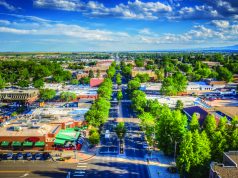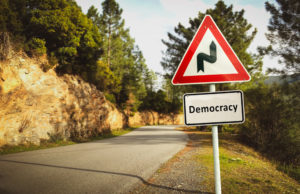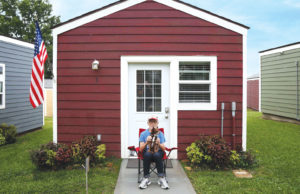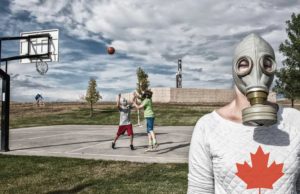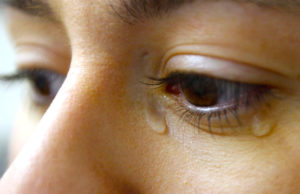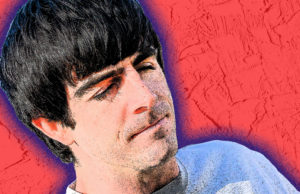— Moments after the verdict was announced last week in a racially
charged case involving a white transit cop who fatally shot a black
man, the accusations rang out.
Critics said the jury convicted former Bay Area Rapid Transit police officer
manslaughter — because none of the jurors was black. Three were Latino,
one was Asian and eight were white.
Though the verdict prompted protests and looting in
on Thursday, the violence was limited — mostly likely because it is so
rare for a jury to find an on-duty police officer guilty of any abuse
that the verdict was viewed by some as a small victory.
But the case has rekindled a hotly debated legal
issue: the impact of the under-representation of minorities on juries,
particularly blacks.
Commenting on the makeup of the jury,
said: “I think everyone — the family, every young black person who is
afraid of the police — is going to see this as a miscarriage of
justice.”
In
While lack of jury diversity still exists,
a day in 2000 (the first increase since 1957) and reducing the time
potential jurors had to wait before serving or being dismissed. The
state also made it easier for jury candidates to defer service to a
more convenient time, said
“Minorities are less likely to come to jury
service,” partly because they tend to work for themselves or for
employers that won’t hold their jobs or pay them while they’re in
court, Arriola said.
Moreover, courts get names of potential jurors from
DMV records and voter rolls — eliminating low-income minorities who
don’t own cars and aren’t registered to vote, as well as voters who
have moved to a new location but haven’t filed a change of address.
Still, some
“Though we lack diversity in jury pools, we’re fortunate because a lot of people in
But former
cannot be trusted in racially charged cases endures in the
African-American community as a result of decades of discrimination —
regardless of whether it’s warranted in a particular case. Cordell is
African-American and was recently appointed
“If Mehserle had a jury with only African-Americans
on it and no whites at all, how would he and his supporters feel?”
Cordell said. “If you flip it, you’d probably get the identical
response from a different community.”
Most scholars and legal experts who study juries
have found that race and ethnicity — and perceptions about it — often
exert a strong influence at every stage of a racially sensitive case,
from which jurors lawyers disqualify to what’s discussed during jury
deliberations and even to verdicts.
In a criminal trial both prosecutors and defense
attorneys can dismiss a set number of jurors for almost any reason
without having to provide cause. Although the
“You can hide your racially motivated challenge by simply giving a ‘race-neutral’ reason judges approve of,” said
trial consultant renowned for his work in the successful prosecution of
defendants in eight major civil rights cases, including the 1963
Birmingham church bombing by the Ku Klux Klan that killed four children.
A landmark study released in June by the
nonprofit legal group Equal Justice Initiative found that the practice
of excluding blacks and other minorities from juries is widespread in
eight Southern states. For instance, in
from 2005 to 2009, prosecutors used peremptory strikes to remove 80
percent of the blacks in jury pools. As a result, half of the juries
during that period were all white, and the rest had only one black
member — in a county that is 27 percent African-American.
But the problem is not limited to the South, said the group’s executive director,
“There is perhaps no arena of public life in America
or governmental administration where racial discrimination is more
widespread, apparent and seemingly tolerated than in the selection of
juries,” he wrote in the report.
In the Mehserle trial, there were five blacks out of 100 prospective jurors, according to
The Mehserle jurors were drawn from neighborhoods within 20 miles of the downtown
heaviest African-American population — where blacks make up 20 percent
to 50 percent of city council districts — it also includes heavily
white and Latino areas.
“Lawyers come in here all the time expecting an all-black jury in the
Two of the black prospective jurors asked to be excused from the Mehserle case for financial reasons,
reported. The attorneys representing the accused cop used challenges to
remove the remaining three. One had relatives who were police officers;
another said her husband was a victim of racial profiling by police.
Some experts say omitting black jurors robs the jury
of a perspective born of their unique life experience — and without
that, great injustices can occur. Many cite the acquittals in the
Rodney King beating trial in
Hispanic and Asian jurors don’t necessarily share
the same world view, said radio commentator Earl Ofari Hutchinson,
especially in
But despite the stereotype, not all blacks share a
grim view of law enforcement — though many do. A key difference between
them and people who aren’t black often comes down to how they regard
young black men, Stevenson said.
“What you mostly worry about is that
over-representation by whites will create a presumption of guilt, a
sense that black men are dangerous and guilty of something, which then
justifies the use of force” or more serious charges, Stevenson said.
Referring to the Mehserle case and the killing of
Grant, he added, “If jurors can see in that young man their nephew,
their child, then their sensitivity to his victimization will be
greater. If they see in this young man the unfortunate but common
perception of the dangerous young African-American man, it will be
harder to get them to render a fair and reliable verdict.”
———
(c) 2010, San Jose Mercury News (San Jose, Calif.).
Visit MercuryNews.com, the World Wide Web site of the
Distributed by McClatchy-Tribune Information Services.


